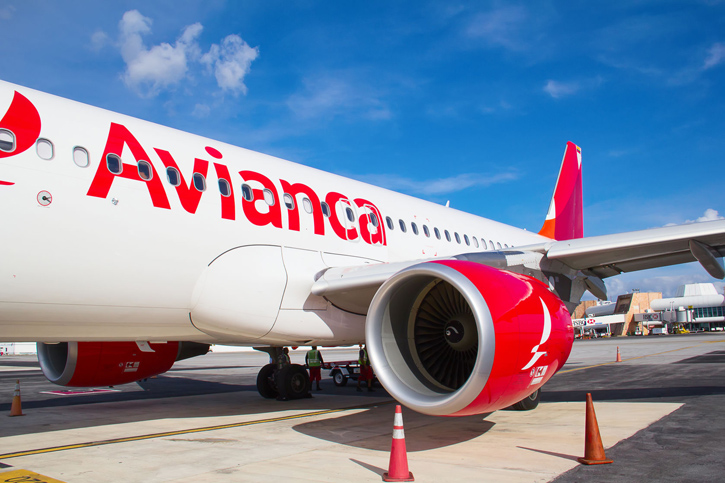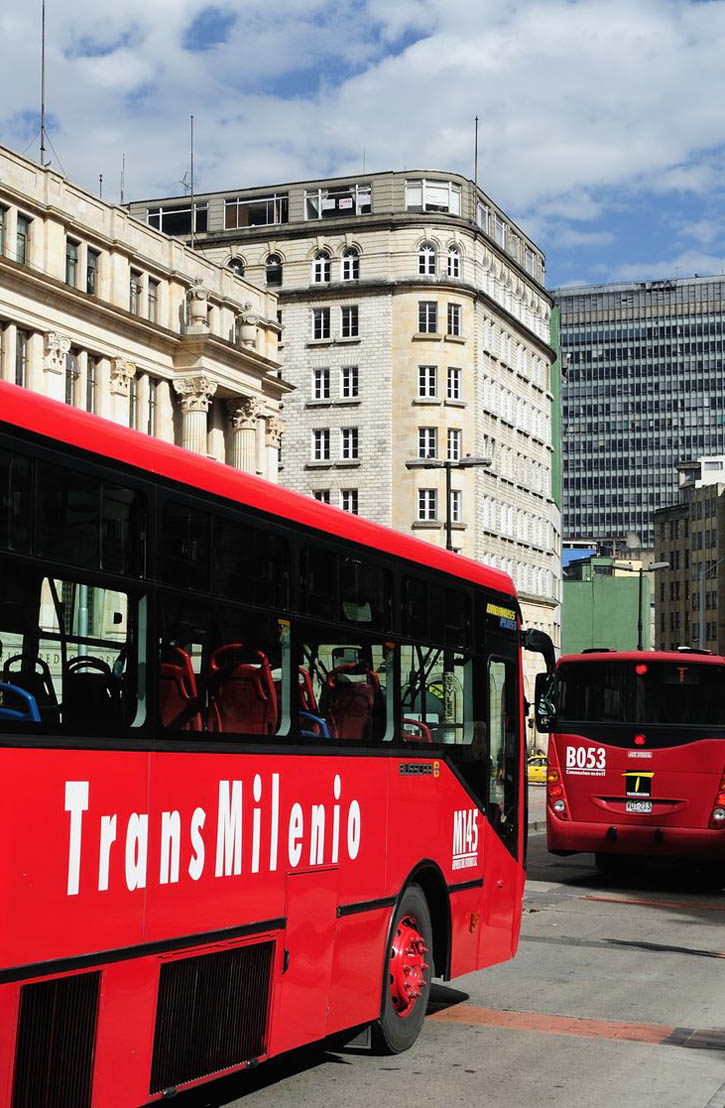There are plenty of options for getting around Colombia, each with their own pros and cons depending on your budget, timeframe, travel destination, and personal preferences. Here are all the ins and outs of traveling by airplane, bus, and car–and even motorcycle and bicycle, too.
Air travel is an excellent, quick, and, thanks to the arrival of discount airliners such as VivaColombia, an often economical way to travel within Colombia. Flying is, without a doubt, the best option for those for whom the idea of 16 hours in a bus is not very appealing. Airlines have generally excellent track records and maintain modern fleets.
If you are flying to the Coffee Region, inquire about flights to Pereira, Armenia, and Manizales, as the distances between these cities are short.Bogotá is the major hub in the country, with domestic Avianca (tel. 1/401-3434) flights departing from the Puente Aereo (not from the main terminal of the adjacent international airport). All other domestic carriers: LAN Colombia (Colombian toll-free tel. 01/800-094-9490), Viva Colombia (tel. 1/489-7989), EasyFly (tel. 1/414-8111), Satena (Colombian toll-free tel. 01/800-091-2034), and Copa (tel. 01/800-011-0808) do depart from the new domestic wing of the international airport.For some destinations (namely Leticia in Amazonia), the Pacific Coast destinations of Bahía Solano and Nuquí, La Macarena (Caño Cristales) in Los Llanos, and San Andrés and Providencia in the Caribbean, the only viable way to get there is by air.

Avianca has numerous flights between Cali, Bogotá, and Medellín throughout the day. It also operates nonstop flights to Cartagena, Barranquilla, Pasto, and Tumaco. Photo © Fedor Selivanov/123rf.
If you plan to fly to Caribbean destinations such as Cartagena, San Andrés, Providencia, and Santa Marta during high tourist season, be sure to purchase your ticket well in advance, as seats quickly sell out and prices go through the roof. If your destination is Cartagena or Santa Marta, be sure to check fares to Barranquilla. These may be less expensive, and that city is only about an hour away. Similarly, if you plan to go to the Carnaval de Barranquilla in February, check fares to both Cartagena and Santa Marta. If you are flying to the Coffee Region, inquire about flights to Pereira, Armenia, and Manizales, as the distances between these cities are short. The Manizales airport, however, is often closed due to inclement weather.
Medellín has two airports: Aeropuerto Internacional José María Córdova (in Rionegro) and Aeropuerto Olaya Herrera. All international flights and most large airplane flights depart from Rionegro, a town about an hour away from Medellín. The airport is simply referred to as “Rionegro.” Satena (Colombian toll-free tel. 01/800-091-2034) and Aerolíneas Antioqueñas-ADA (Colombian toll-free tel. 01/800-051-4232) use the Olaya Herrera airport, which is conveniently located in town. This is a hub for flights to remote communities in the western and Pacific Region, including Acandí and Capurganá near the Panamanian border.
There are often strict weight restrictions for flights to Providencia from San Andrés and generally on small planes, such as on the military-owned Satena airline.
The vast majority of Colombians travel by bus. This is the money-saving choice and often the only option for getting to smaller communities. There are different types of buses, from large coaches for long-distance travel to colectivos for shorter distances. Colectivos (minivans) are often much quicker, although you won’t have much leg room. There are also shared taxi options between many towns.
During major holidays, purchase bus tickets in advance if you can, as buses can quickly fill up.When you arrive at a bus station with guidebook in hand and backpack on, you will be swarmed by touts barking out city names to you, desperately seeking your business on their bus. You can go with the flow and follow them, or, if you prefer a little more control and calm, you can instead walk past them to the ticket booths. Forge ahead and shake your head while saying “gracias”.Be alert and aware of your surroundings and of your possessions when you arrive at bus stations, are waiting in the bus terminal, and are onboard buses. Try to avoid flashing around expensive gadgets and cameras while onboard. During pit stops along the way, be sure to keep your valuables with you at all times. Don’t feel obliged to tell anyone your life story, where you are off to, or where you are staying. At the same time, most Colombians are extremely friendly and are simply just curious about foreigners visiting their country.
During most bus rides of more than a few hours’ length, you will be subjected to violent films that the bus companies apparently find appropriate to be shown to small children. Earplugs, eyemasks, and even sleeping pills available at most pharmacies for those super-long journeys may come in handy, but make sure your possessions are well-guarded.
Bus drivers like to drive as fast as possible, and generally have few qualms about overtaking cars even on hairpin curves. You’re better off not paying too much attention to the driving—it will do you no good! Large buses tend to be safer than smaller ones, although they may not go as fast.
During major holidays, purchase bus tickets in advance if you can, as buses can quickly fill up.
Buses may be stopped by police, and you may be required to show or temporarily hand over your passport (keep it handy). Sometimes all the passengers may be asked to disembark from the bus so that the police can search it for illegal drugs or other contraband. Young males may be given a pat-down. Even if it annoys you, it is always best to keep one’s cool and remain courteous with police officers who are just doing their job.
Within cities, traveling by bus is often the easiest way to get around. Many cities, such as Medellín, Cali, Armenia, Bucaramanga, Pereira, Barranquilla, and (soon) Cartagena, have adopted the Bogotá rapid bus system model of the TransMilenio.

The TransMilenio bus system has been lauded internationally and copied by several cities as a very cost effective mass transit system. Photo © Carlos Mora/123rf.
Driving in Colombia is generally a poor idea for tourists. Roads are often in a poor state and are almost always just two lanes, speed limits and basic driving norms are not respected, driving through large towns and cities can be supremely stressful, signage is poor, sudden mudslides can close roads for hours on end during rainy seasons, and roads can be unsafe at night.
One exception is the Coffee Region. Here the roads are excellent, often four lanes, distances are short, and traffic is manageable. If you are planning on spending some time visiting coffee farms and idyllic towns, this might be a good option.
Another region where renting a car may make sense is in Boyacá. Here the countryside is beautiful and traffic is manageable.
There are car rental offices in all the major airports in the country. Hertz (tel. 1/756-0600) and the national Colombia Car Rental (U.S. tel. 913/368-0091) are two with various offices nationwide.
Touring Colombia on motorcycle is an increasingly popular option. One of the best motorcycle travel agencies in the country is Motolombia (tel. 2/392-9172), based in Cali. Many motorcyclists take the Pan-American Highway through Colombia to Ecuador to continue on a once-in-a-lifetime South American bike tour.
Bicyclists will not get much respect on Colombian roads, and there are rarely any bike lanes of significance. In Santander and in Boyacá the scenery is absolutely spectacular, but, especially in Santander, it is often quite mountainous. In the Valle de Cauca, around Buga and towards Roldanillo, the roads are good and flat! Staff at Colombian Bike Junkies (cell tel. 316/327-6101), based in San Gil, are experts on biking throughout the country.
Every Sunday in cities across Colombia thousands of cyclists (joggers, skaters, and dog walkers, too) head to the city streets for some fresh air and exercise. This is the Ciclovía, an initiative that began in Bogotá, when city streets are closed to traffic. Except in Bogotá, it may be difficult to find a bike rental place, but you can still head out for a jog. Ciclorutas (bike paths) are being built in the major cities as well, and Bogotá has an extensive cicloruta network. Again, cyclists don’t get much respect from motorists, so be careful!
Excerpted from the First Edition of Moon Colombia.